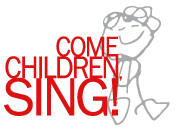A child is not ready to learn a traditional musical instrument until he is both rhythmically and tonally competent. Music skill has to be developed within the body before it is ready to be applied to an instrument. The musical instrument cannot teach your child to sing tunefully or move rhythmically, yet singing tunefully and moving rhythmically are essential to success with an instrument. The greater the competency your child brings to the instrument, the finer instrumentalist he can become.
Traditional instruments are often scaled down to the young child’s limited size, but they are not scaled down to the young child’s limited tonal and rhythm skills. Learning a musical instrument can actually get in the way of the development of necessary tonal and rhythm skills, as it interrupts the child’s natural attention to tonal and rhythm and refocuses it to instrumental technique, and, too often, notation. Without tonal and rhythm skills, a young child might be better off manipulating a computer rather than a musical instrument, as the computer won’t get in the way of music development.
With language, your child learns to understand and speak the language before he is asked to read and write. Instrumental music instruction that claims to teach “music reading” to the young child is teaching “note naming,” not music reading. The language equivalent would be to teach a child to recognize and press a “C” or “D” on the computer keyboard, before he can speak or understand the language. He can learn to do that, but the activity is not teaching the child the language.
The body instrument is the most important musical instrument to master. Your child should be able to sing well in tune and move his body rhythmically, demonstrating a strong sense of tonality, meter, and expressive musicality before ever starting a musical instrument. Instrumental proficiency is a worthy goal, yet there is no instrument more beautiful than the child voice.
|

